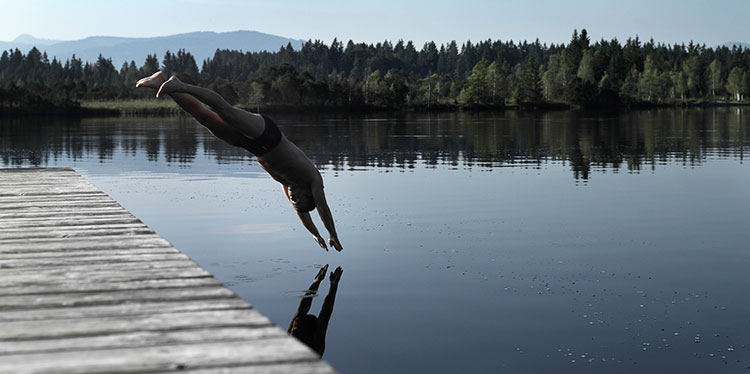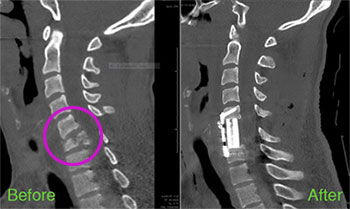A spinal injury that changed a young man’s life

Spinal cord and traumatic brain injuries can happen in an instant and may significantly change a person’s life. This was the case for Nick Maestas, who ended up with a spinal fracture after a diving accident in rural Minnesota.
Fortunately for Nick, he was taken to Cambridge Hospital where he was immediately evaluated. The medical staff at Cambridge transferred Nick via helicopter to one of Minnesota’s Level 1 trauma centers, Hennepin County Medical Center (HCMC). At HCMC, Nick’s family was met by the trauma team in the emergency department. At this point, Nick was stabilized and several tests were done to determine the full extent of his injuries.
Nick was scheduled for surgery two days later. That’s when he met Dr. Uzma Samadani, who sees a high volume of spinal fracture patients. “At HCMC, we deal with a lot of these types of injuries, unfortunately, with many patients traveling from great distances to see us. We have the expertise to manage these complex cases which are often referred by other neurosurgeons,” said Dr. Samadani.
 Dr. Samadani said that in the summer of 2016 when Nick had his accident, the emergency department had taken on an average of 2-3 spinal trauma cases per week. Most spinal fracture cases fall into three distinct categories: falls, motorcycle accidents, and diving accidents. Dr. Samadani sees each spinal fracture as a unique case. It’s very important not to move the patient too much, which could cause paralysis. You have to be extremely careful.
Dr. Samadani said that in the summer of 2016 when Nick had his accident, the emergency department had taken on an average of 2-3 spinal trauma cases per week. Most spinal fracture cases fall into three distinct categories: falls, motorcycle accidents, and diving accidents. Dr. Samadani sees each spinal fracture as a unique case. It’s very important not to move the patient too much, which could cause paralysis. You have to be extremely careful.
Dr. Samadani, who serves on the American Association of Neurological Surgeons/Congress of Neurosurgeons Executive Committee on Neurotrauma and Critical Care, is a firm believer in the committee’s guidelines for treating patients with traumatic spine injuries. “Attention to detail is important”, she noted, “positioning and maintenance of blood pressure can help preserve function in the intact patient. Recovery depends entirely on the severity and duration of symptoms. An accident like this could very well be the worst day of your life. It’s devastating for everyone involved. Our goal is to get them back to what they can do,” said Dr. Samadani.
 Dr. Uzma Samadani is involved in ongoing research in the areas of improved outcomes for patients with acute spinal cord injuries, as well as epidural spinal cord studies in paraplegic patients. Hennepin County Medical Center is a study site for the national VERTEX trial, which is a Phase 2 study investigating a potential treatment for paralyzing spinal cord injuries in the neck. She is also collaborating with colleagues within the Department of Neurosurgery at the University of Minnesota to study how function can be restored in paraplegic patients with epidural spinal cord stimulation.
Dr. Uzma Samadani is involved in ongoing research in the areas of improved outcomes for patients with acute spinal cord injuries, as well as epidural spinal cord studies in paraplegic patients. Hennepin County Medical Center is a study site for the national VERTEX trial, which is a Phase 2 study investigating a potential treatment for paralyzing spinal cord injuries in the neck. She is also collaborating with colleagues within the Department of Neurosurgery at the University of Minnesota to study how function can be restored in paraplegic patients with epidural spinal cord stimulation.

